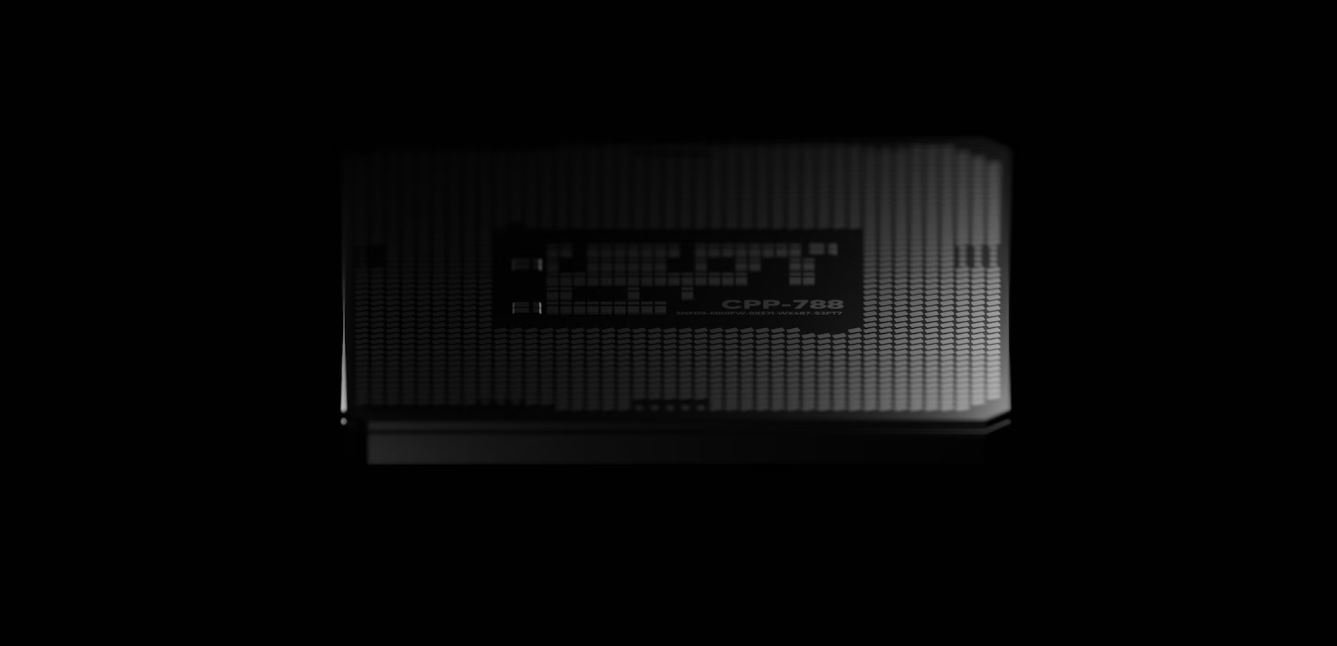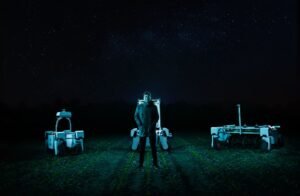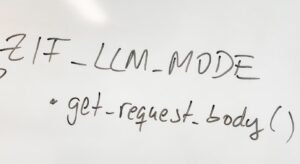What Is Production Design
Production design is a key element in the filmmaking process, encompassing the creation of the overall visual look and feel of a film or TV show. It involves the careful selection and arrangement of elements such as sets, locations, props, costumes, color schemes, and lighting to create an immersive and cohesive world on screen. The production designer is responsible for overseeing this process, working closely with the director and other departments to bring the vision of the project to life.
Key Takeaways
- Production design focuses on the visual aspects of a film or TV show, creating the overall look and feel of the project.
- It involves the selection and arrangement of sets, locations, props, costumes, color schemes, and lighting.
- The production designer is responsible for overseeing the production design process.
**Production design is often a collaborative effort, with the production designer working closely with the director, cinematographer, art department, and other key personnel.** This collaboration ensures that the visual style of the project aligns with the overall storytelling goals and enhances the narrative. The production designer starts by reading the script and discussing the director’s vision, *taking into consideration the time period, genre, and tone of the project*. They then conduct extensive research to gather inspiration and develop a visual concept for the film or TV show.
**Once the concept is established, the production designer begins the process of designing the physical elements of the production**. This involves creating detailed sketches, storyboards, or 3D models of sets, props, and locations. *These designs are crucial, as they serve as a blueprint for the construction and decoration of the physical spaces within the film*. The production designer works closely with the art department to bring these designs to life, overseeing the construction, decoration, and dressing of sets, and procuring or creating props and costumes that are in line with the visual concept.
The Role of Production Design in Filmmaking
**Production design plays a crucial role in enhancing the overall storytelling and creating a believable world for the characters and the audience**. Through the careful selection and arrangement of visual elements, the production designer helps to establish the time period, location, and mood of the story. *A well-executed production design can transport the audience to a different time, place, or universe and evoke specific emotions based on the visual choices made*. It helps to immerse the audience in the story, making the film or TV show more engaging and memorable.
**The production design also contributes to character development**. By designing the characters’ living spaces, workplace environments, or personal possessions, the production designer helps to convey their personality traits, socio-economic background, and interests. *The design choices can provide valuable insights into the characters without the need for explicit exposition or dialogue*. For example, the cluttered and disorganized apartment of a protagonist might reflect their chaotic inner world, while the sleek and minimalist office space of an antagonist can reinforce their cold and calculated demeanor.
Tables
| Key Elements of Production Design | Description |
|---|---|
| Sets | The physical spaces where the action takes place, ranging from elaborate constructions to existing locations. |
| Locations | Real-world settings used to enhance the authenticity and visual appeal of a film or TV show. |
| Props | The objects or items that actors interact with during the scenes, adding detail and realism to the story. |
| Costumes | The clothing and accessories worn by the characters, revealing information about their identity, social status, and personality. |
| Color Schemes | The deliberate selection and use of colors to evoke certain emotions or convey specific themes. |
| Lighting | The strategic placement and manipulation of light sources to create atmosphere, highlight important elements, and set the overall mood. |
The Importance of Production Design
**Production design has a profound impact on the audience’s perception of a film or TV show**. It helps to create a world that is visually cohesive and memorable, enhancing the storytelling and immersing the viewers in the narrative. *Without effective production design, a project may lack depth, authenticity, and a strong visual identity*. The attention to detail in every aspect of production design adds layers of meaning and richness to the story, making it more visually appealing and compelling.
**The demand for skilled production designers continues to grow** as film and TV productions become more ambitious and visually stunning. With advancements in technology, production designers are now utilizing techniques such as computer-generated imagery (CGI) and virtual reality to push the boundaries of visual storytelling. *This allows for the creation of intricate and expansive worlds that were once considered impossible to bring to life on screen*. The role of production design goes beyond aesthetics; it is an integral part of the filmmaking process that helps shape and elevate the overall quality of a production.
Conclusion
Production design is an essential part of the filmmaking process, encompassing the visual creation of a film or TV show. It involves the selection and arrangement of sets, props, costumes, color schemes, and lighting to convey the time period, location, mood, and character development. The role of the production designer is crucial in creating an immersive and believable world on screen. Effective production design enhances the storytelling, immerses the audience, and adds depth and richness to the overall production.

Common Misconceptions
Paragraph 1: Production Design Defined
One common misconception about production design is that it is solely focused on the aesthetic aspects of a film or theater production. While it is true that production design involves creating visually appealing sets, costumes, and props, its scope goes beyond just the appearance.
- Production design also includes creating a cohesive overall visual concept that communicates the intended mood or atmosphere of the production.
- Production designers work closely with directors and cinematographers to ensure that the visual elements align with the storytelling and thematic goals of the project.
- Additionally, production design involves extensive research and planning to select and create the appropriate visual elements that will enhance the narrative and create a believable world for the audience.
Paragraph 2: Production Designers are Decorators
Another misconception is that production designers are simply decorators or set dressers. While these roles are part of the production design process, production designers have a much larger role in shaping the overall visual experience of a production.
- Production designers are responsible for the conceptualization and execution of the visual concept, which includes set design, color palettes, and overall look and feel.
- They collaborate with other departments, such as art directors and costume designers, to ensure a cohesive visual style throughout the production.
- Production designers also work closely with the director to understand their vision and translate it into visual elements that serve the story.
Paragraph 3: Production Design vs. Art Direction
There is often confusion between production design and art direction, with some people assuming they are interchangeable terms. While they are related, they are distinct roles within the production process.
- Production design encompasses a broader scope, involving the overall concept and execution of the visual elements, including sets, props, and costumes.
- Art direction, on the other hand, is focused on the specific design and aesthetics of individual shots or scenes within the production.
- Production designers collaborate with art directors, who are responsible for overseeing and implementing the production design on a day-to-day basis.
Paragraph 4: Production Design is Glamorous
Many people mistakenly believe that working in production design is a glamorous job filled with glitz and glamour. While the final results may be visually stunning, the reality of the job is often quite different.
- Production designers work long hours, often under tight deadlines, to bring the director’s vision to life.
- They deal with budget constraints and practical considerations, such as finding creative solutions to achieve the desired visual effect within limited resources.
- Production design requires meticulous attention to detail, organization, and problem-solving skills, which are essential for the successful execution of the visual concept.
Paragraph 5: Production Design is Static
Lastly, there is a misconception that production design is a static process that occurs only in the pre-production stage. In reality, production design is an ongoing and evolving collaboration throughout the production.
- Production designers work closely with other departments throughout the production, constantly adapting and refining the visual elements as needed.
- They are present on set to ensure continuity and make any necessary adjustments to the set or props during filming.
- Production designers also collaborate with post-production teams to ensure that the visual style is maintained during the editing and color grading process.

Introduction
Production design is a crucial aspect of creating a visual world for films, television shows, and other media. It involves various elements such as set design, props, costumes, and location scouting. In this article, we will explore different aspects of production design through visually engaging tables.
Table 1: Oscar-Winning Movies for Best Production Design
Achieving excellence in production design is often recognized by prestigious awards such as the Academy Awards. Here are some notable films that have won the Oscar for Best Production Design:
| Film Title | Year |
|---|---|
| The Grand Budapest Hotel | 2014 |
| Mad Max: Fury Road | 2016 |
| Black Panther | 2018 |
Table 2: Famous Production Designers
Behind every visually stunning film, there is a talented production designer who crafts the overall look and feel. Here are some renowned production designers and their notable works:
| Production Designer | Notable Works |
|---|---|
| Dante Ferretti | Hugo, Gangs of New York |
| Sarah Greenwood | An Education, Beauty and the Beast |
| Rick Carter | Avatar, Star Wars: The Force Awakens |
Table 3: Most Expensive Film Production Designs
Some films require substantial investments in production design to create captivating visual experiences. Here are a few movies known for their lavish production budgets:
| Film Title | Budget (in millions) |
|---|---|
| Avengers: Endgame | $356 |
| Avatar | $237 |
| Spider-Man 3 | $258 |
Table 4: Key Elements of Production Design
Production design encompasses various creative elements that contribute to the overall visual narrative. Here are some essential elements:
| Element | Description |
|---|---|
| Set Design | Creating and constructing physical or virtual environments to suit the story. |
| Costume Design | Selecting and creating costumes to reflect characters’ personalities, time period, and setting. |
| Props | Choosing or creating objects used by characters to enhance the story. |
Table 5: Production Design vs. Art Direction
Production design and art direction are interconnected but distinct aspects of filmmaking. Here’s a comparison between the two:
| Production Design | Art Direction |
|---|---|
| Focuses on the overall visual concept and execution. | Concentrates on the specific visual details and aesthetics. |
| Includes set design, props, costumes, and location scouting. | Primarily deals with set dressing, color palettes, and visual compositions. |
Table 6: Impact of Production Design on Box Office Success
A carefully planned and executed production design not only enhances storytelling but also contributes to the financial success of a film. Here are some box office hits with impressive production design:
| Film Title | Worldwide Box Office Gross (in millions) |
|---|---|
| Black Panther | $1,346 |
| Inception | $828 |
| Harry Potter and the Deathly Hallows: Part 2 | $1,342 |
Table 7: Use of Practical Effects in Production Design
While digital effects dominate the industry, practical effects still play an essential role in production design. Here are some notable films that extensively used practical effects:
| Film Title | Practical Effects |
|---|---|
| Mad Max: Fury Road | Real stunts, explosions, and vehicles |
| Interstellar | Physical spaceships and models |
| The Lord of the Rings Trilogy | Prosthetics, makeup, and animatronics |
Table 8: Production Design in Different Film Genres
Production design adapts to various genres, helping shape the visual identity of different types of films. Here are some examples across genres:
| Genre | Notable Films |
|---|---|
| Sci-Fi | Blade Runner, The Matrix, Ex Machina |
| Fantasy | Harry Potter series, The Chronicles of Narnia |
| Period Drama | Pride and Prejudice, The Age of Innocence |
Table 9: Production Design in Television
Production design plays a significant role not only in films but also in television. Here are some popular shows known for their remarkable production design:
| Television Show | Notable Elements |
|---|---|
| Stranger Things | 80s nostalgia, iconic set design |
| Game of Thrones | Immersive fantasy world, elaborate costumes |
| Breaking Bad | Transforming mundane locations into character-rich spaces |
Conclusion
Production design is a vital component of visual storytelling, with production designers utilizing their creative skills to create immersive worlds that captivate audiences. From creating breathtaking sets to crafting unique costumes, production design brings the vision of directors to life. Through this article, we have explored various aspects of production design, including awards, renowned designers, financial impacts, and its role in different genres. The tables provided serve as glimpses into the diverse and captivating world of production design.
Production Design – Frequently Asked Questions
What Is Production Design?
Production design refers to the process of creating the overall visual identity and aesthetic of a film, television show, or theatrical production. It involves designing and coordinating elements such as sets, costumes, props, and visual effects to create a cohesive and immersive world for the audience.
What Does a Production Designer Do?
A production designer is responsible for overseeing and managing the visual aspects of a production. They collaborate with directors, producers, and other creatives to develop the artistic vision and translate it into tangible design elements. They oversee the set and costume designs, choose locations, and work closely with the art department to ensure the overall visual consistency.
How does Production Design Contribute to a Film or TV Show?
Production design plays a crucial role in creating the atmosphere, mood, and overall feel of a film or TV show. It helps transport the audience into the world of the story, enhancing the narrative and engaging their emotions. Through careful attention to details and visual storytelling, production design greatly contributes to the overall cinematic experience.
What Skills are Required for a Production Designer?
A production designer needs a combination of artistic, technical, and organizational skills. They should have a strong understanding of visual aesthetics, color theory, and composition. Additionally, proficiency in design software, budgeting, project management, and communication skills are essential for effectively collaborating with the production team and bringing the creative vision to life.
How Does a Production Designer Collaborate with Other Departments?
A production designer collaborates closely with various departments to ensure the visual consistency and coherence of the production. They work with the art department to design and construct sets and props, with the costume department to create costumes that align with the overall vision, and with the cinematographer to achieve the desired lighting and camera effects. This collaboration is vital in creating a unified visual experience for the audience.
What Role Does Research Play in Production Design?
Research is a crucial aspect of production design. It helps designers understand the specific time period, location, and cultural context in which the story is set. By conducting research, production designers can ensure that the visual elements accurately reflect the desired historical or fictional world, thus enhancing the authenticity and believability of the production.
What Is the Difference Between Production Design and Art Direction?
While production design and art direction are related, they have distinct roles within the overall design process. Production design encompasses the entire visual concept and look of the production, including sets, costumes, props, and visual effects. Art direction, on the other hand, focuses more specifically on the visual execution of the production design, overseeing aspects such as color schemes, set dressing, and the overall artistic direction.
What Are Some Examples of Iconic Production Design in Film?
Some examples of iconic production design in film include the dystopian world created by Rick Carter and Robert Stromberg in “Avatar,” the 1920s New York City crafted by Catherine Martin in “The Great Gatsby,” and the whimsical fairy tale world designed by Stuart Craig in the “Harry Potter” series. These exceptional production designs have greatly contributed to the immersive and memorable cinematic experiences of these films.
How Does Production Design Contribute to the Storytelling Process?
Production design is an essential storytelling tool. It visually represents the narrative, setting the mood, tone, and atmosphere of the story. Through careful consideration of colors, textures, and props, production design can convey character traits, reflect the story’s themes, and immerse viewers in the world of the story. It adds depth and dimension to the storytelling process, making it more visually engaging and impactful.
How Can I Pursue a Career in Production Design?
To pursue a career in production design, it is beneficial to obtain a degree or formal training in areas such as film, theater, or visual arts. Building a strong portfolio showcasing your design skills and collaborating on student or independent projects can also help in gaining practical experience. Networking within the industry, joining relevant professional organizations, and staying updated with industry developments are other valuable steps towards starting a career in production design.




